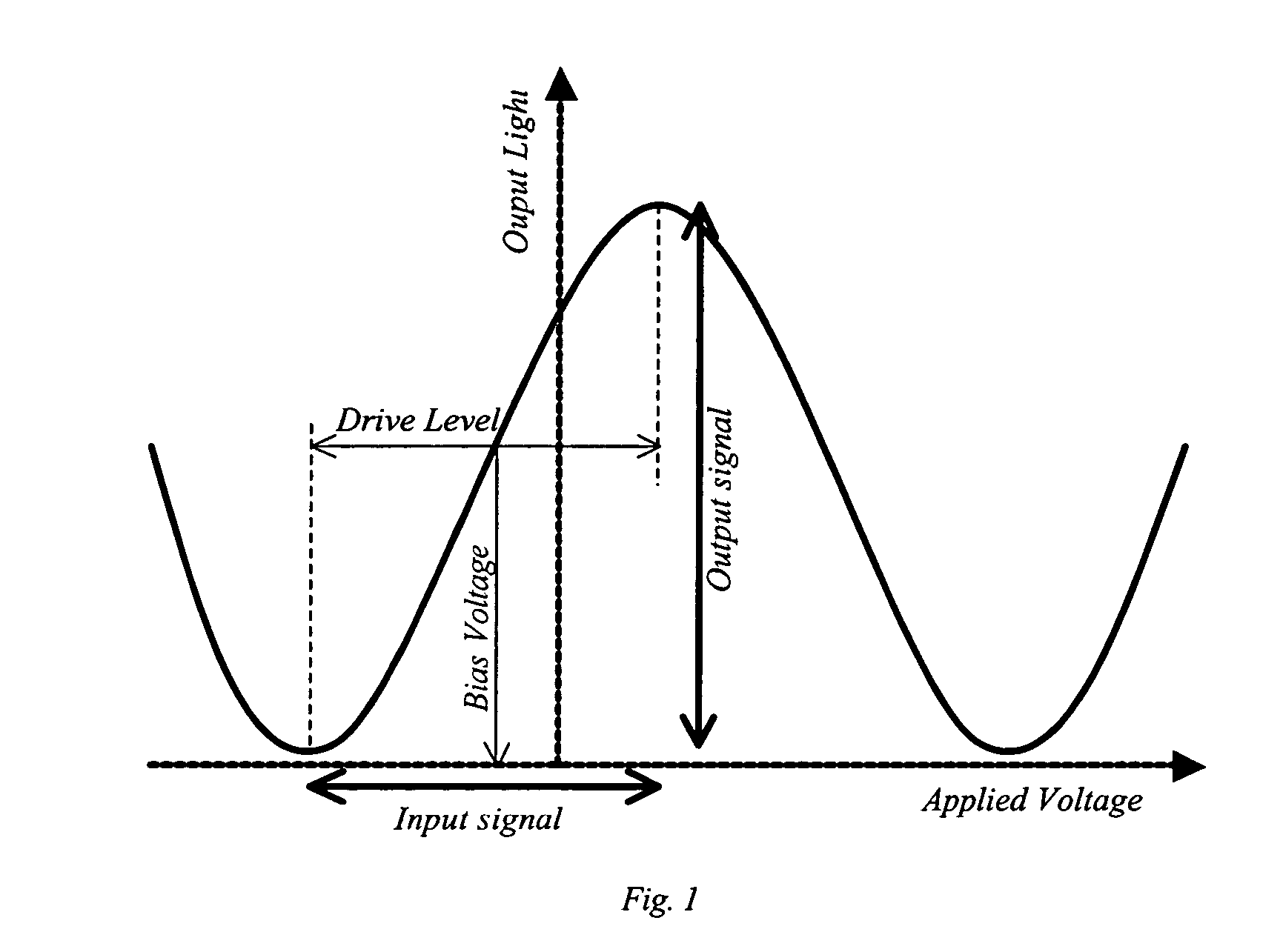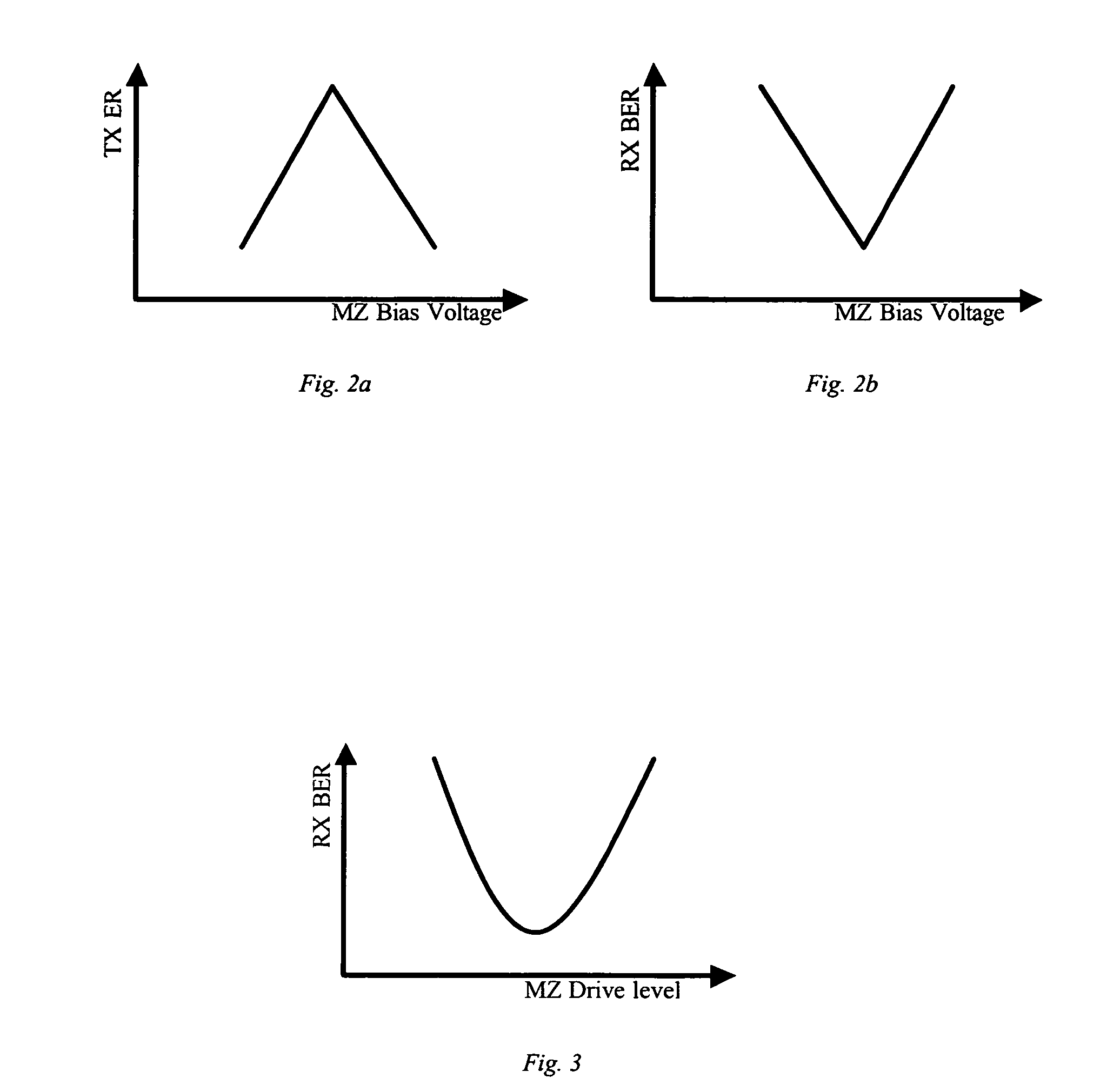Adaptive pulse shape control
a pulse shape and control technology, applied in the direction of electromagnetic transmission, link quality based transmission modification, transmission, etc., can solve the problems of long-haul transmission system suffer non-linear distortion, dispersion and self-phase modulation (spm), etc., and achieve the effect of relatively easy measuremen
- Summary
- Abstract
- Description
- Claims
- Application Information
AI Technical Summary
Benefits of technology
Problems solved by technology
Method used
Image
Examples
Embodiment Construction
[0036]MZ interferometers are commonly used in optical transmission systems. FIG. 1 shows how the output signal of a typical MZ varies with the applied voltage. As shown, the MZ is normally driven around a bias voltage by a drive level. The bias voltage is typically set for the mid-point of output power (half way between a maximum and a minimum shown in the curve shown in FIG. 1).
[0037]The drive level is then set to maximise the extinction ratio of the signal. The extinction ratio (ER) of an optical signal is a commonly used parameter. It is defined as (light level at ‘1’—light level at ‘0’) / (light level at ‘0’). As such, to maximise the ER the drive level is chosen to drive the MZ across its full characteristics. In this way, a maximally open data eye is achieved. FIG. 4a illustrates the resulting optical signal when the modulator is driven in this way. Conventional techniques try to ensure that this pulse shape is retained throughout the life of the transmitter.
[0038]MZ interferome...
PUM
 Login to View More
Login to View More Abstract
Description
Claims
Application Information
 Login to View More
Login to View More - R&D
- Intellectual Property
- Life Sciences
- Materials
- Tech Scout
- Unparalleled Data Quality
- Higher Quality Content
- 60% Fewer Hallucinations
Browse by: Latest US Patents, China's latest patents, Technical Efficacy Thesaurus, Application Domain, Technology Topic, Popular Technical Reports.
© 2025 PatSnap. All rights reserved.Legal|Privacy policy|Modern Slavery Act Transparency Statement|Sitemap|About US| Contact US: help@patsnap.com



